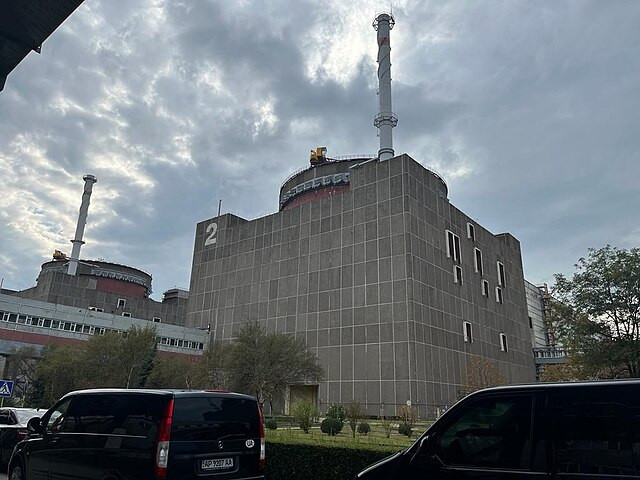Russia and Ukraine have traded blame over a fire that broke out on Sunday at the Russian-occupied Zaporizhzhia nuclear power plant in southern Ukraine. The incident has raised fresh concerns about the safety of the region's nuclear facilities, though both sides report that no elevated radiation levels have been detected.
The International Atomic Energy Agency (IAEA), the UN's nuclear watchdog, reported seeing "thick, dark smoke" billowing from the northern part of the sprawling six-reactor plant, which has been in a "cold shutdown" since April. The IAEA described the situation as precarious and called for an immediate cessation of all military actions that could jeopardize nuclear safety. "These reckless attacks endanger nuclear safety at the plant and increase the risk of a nuclear accident. They must stop now," IAEA chief Rafael Grossi said in a statement.
The fire at the plant's cooling towers comes at a time of heightened tension, just days after Ukrainian forces launched their largest incursion into Russian territory since the war began in 2022. Both Moscow and Kyiv were quick to assign blame for the fire, with neither side providing concrete evidence to support their claims.
According to Russia's Interfax news agency, Alexei Likhachev, head of the Russian state nuclear corporation Rosatom, stated that the fire caused "very serious damage" to the cooling towers and was the result of two Ukrainian drone strikes. Likhachev added that it remained unclear whether the damage was reparable or if one of the towers might need to be replaced.
On the other hand, Ukraine's state nuclear power company, Energoatom, accused Russian forces of either negligence or intentional arson, claiming that the cooling towers were being used to store military equipment and explosives. Ukrainian President Volodymyr Zelensky also pointed the finger at Russia, accusing it of deliberately setting the fire as a form of "nuclear terror" and blackmail against Kyiv.
Despite the alarming nature of the incident, the IAEA confirmed that no impact on nuclear safety had been reported. The agency has requested immediate access to the cooling tower to assess the extent of the damage, though neither Moscow nor Kyiv has responded to this request as of yet.
The Zaporizhzhia nuclear plant has been under Russian control since shortly after the full-scale invasion of Ukraine began in 2022. The plant, located near the front lines of the ongoing conflict, has six reactors that rely on external power to keep their nuclear material cool and prevent a catastrophic accident. The proximity of the plant to active combat zones has led to repeated accusations from both sides of endangering nuclear safety.
Zelensky shared a grainy video on social media that appeared to show black smoke rising from the plant's cooling tower, with flames visible at its base. He emphasized that while radiation levels remained normal, the ongoing presence of Russian forces at the plant made the situation precarious. "As long as Russian terrorists retain control over the nuclear plant, the situation is not and cannot be normal," Zelensky said.
This incident adds to the growing list of concerns surrounding the Zaporizhzhia nuclear plant, which has been the site of several dangerous episodes since the start of the war. The IAEA has consistently warned of the risks posed by military activities near nuclear facilities and has called on both Russia and Ukraine to ensure the safety of the plant.
The fire also comes in the wake of Ukraine's surprise cross-border offensive into Russia's Kursk region, which has seen Ukrainian forces advance up to 30 kilometers into Russian territory. This offensive, described by Russian President Vladimir Putin as a "major provocation," has led to significant evacuations and a state of emergency in the affected areas.






